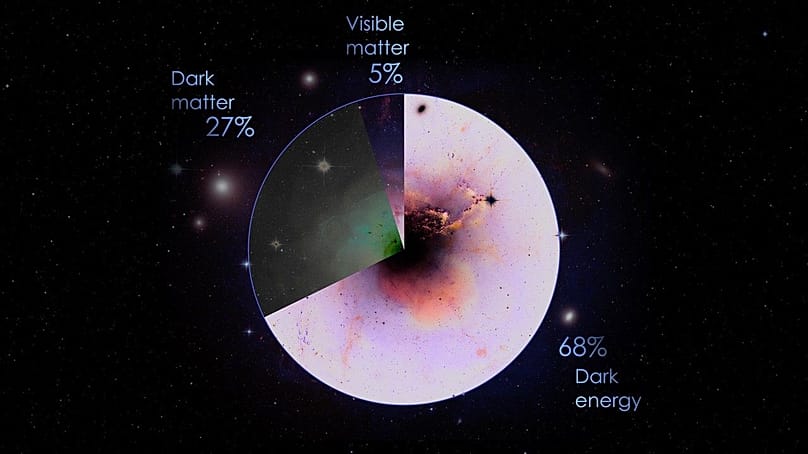The mysterious glow can’t easily be explained, leading a University of Tokyo researcher to argue it could be humanity’s first direct glimpse of dark matter.
A new study from the University of Tokyo claims that NASA's Fermi Gamma-ray Space Telescope has detected a glow at the centre of the Milky Way - one that closely matches what scientists have long predicted would be produced if dark matter particles were colliding and annihilating each other.
If verified, it would mark one of the biggest breakthroughs in modern physics.
In the early 1930s, Swiss astronomer Fritz Zwicky spotted galaxies moving far faster than their visible mass could explain. Something invisible - later named dark matter - appeared to be holding them together
"Dark matter is the invisible glue that holds the universe together. This mysterious material is all around us, making up most of the matter in the universe," said NASA.
For decades, scientists have only been able to infer its existence from the way it warps galaxies and bends light. Because dark matter doesn’t interact with the electromagnetic force, it doesn’t emit, absorb, or reflect any light. In other words, it’s there, but we can’t see it.
However, that may now be changing.
Using new observations from NASA's Fermi telescope, Professor Tomonori Totani of the University of Tokyo believes he has identified gamma rays produced by the annihilation of hypothetical dark matter particles known as WIMPs - weakly interacting massive particles.
The findings were published in the Journal of Cosmology and Astroparticle Physics on Tuesday (25 November).
The gamma-ray halo that shouldn’t exist
"We detected gamma rays with a photon energy of 20 gigaelectronvolts (or 20 billion electronvolts, an extremely large amount of energy) extending in a halolike structure toward the center of the Milky Way galaxy. The gamma-ray emission component closely matches the shape expected from the dark matter halo," said Totani.
The pattern and intensity of the gamma rays - as well as their distribution in a halo around the galactic centre - align almost perfectly with predictions for WIMP collisions.
According to Totani, the inferred mass of the particles, approximately 500 times that of a proton, aligns with long-standing theoretical expectations.
And crucially, the signal does not match emissions from known astronomical phenomena such as pulsars, supernova remnants, or other common gamma-ray sources.
"If this is correct, to the extent of my knowledge, it would mark the first time humanity has 'seen' dark matter. And it turns out that dark matter is a new particle not included in the current standard model of particle physics. This signifies a major development in astronomy and physics," said Totani.
More research needed
But the discovery is yet to be confirmed.
Independent teams will need to analyse the data, and researchers will search for similar gamma-ray signatures elsewhere - particularly in dwarf galaxies, which are rich in dark matter.
"This may be achieved once more data is accumulated, and if so, it would provide even stronger evidence that the gamma rays originate from dark matter," Totani added.



















